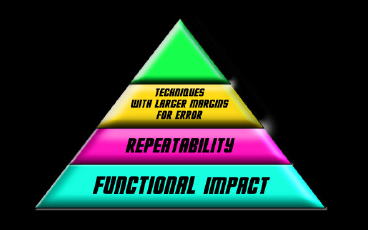Quick Recap
As a quick recap of what you need to know;
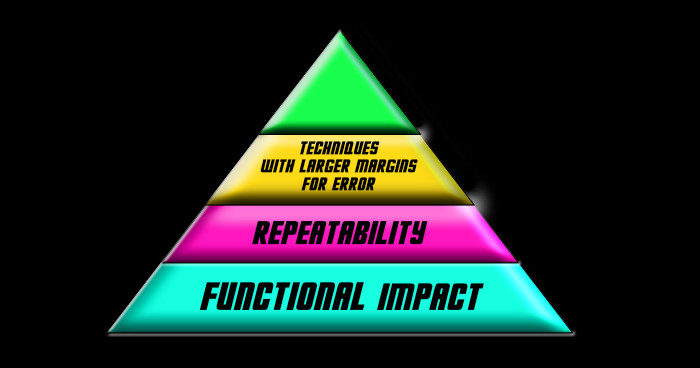 1. The most important thing to the quality of your golf shot is the impact (collision between ball and club head over the space of 0.75 of an inch. If you get this right, nothing else matters.
1. The most important thing to the quality of your golf shot is the impact (collision between ball and club head over the space of 0.75 of an inch. If you get this right, nothing else matters.
2. Doing this repeatably is the next most important thing. However, repeatability is not what most people think – it is more a product of your ability to coordinate your movement and is a skill, not a technique.
3. Using techniques which offer bigger margins for error can give us more repeatable shots, even with the same movement variability.
The model effectively looks like this
Having a functional impact is the most important base to your golf. Repeating it and using techniques which still work when we have biological variability allow us the ultimate in consistency.
This Article
Even if you have all the above in place, we are still human.
We will still have enough variability from shot to shot to make our results less than laser-like.
Therefore, using strategies which allow for the inevitable human movement errors we make will enable us to shoot lower scores.
Side To Side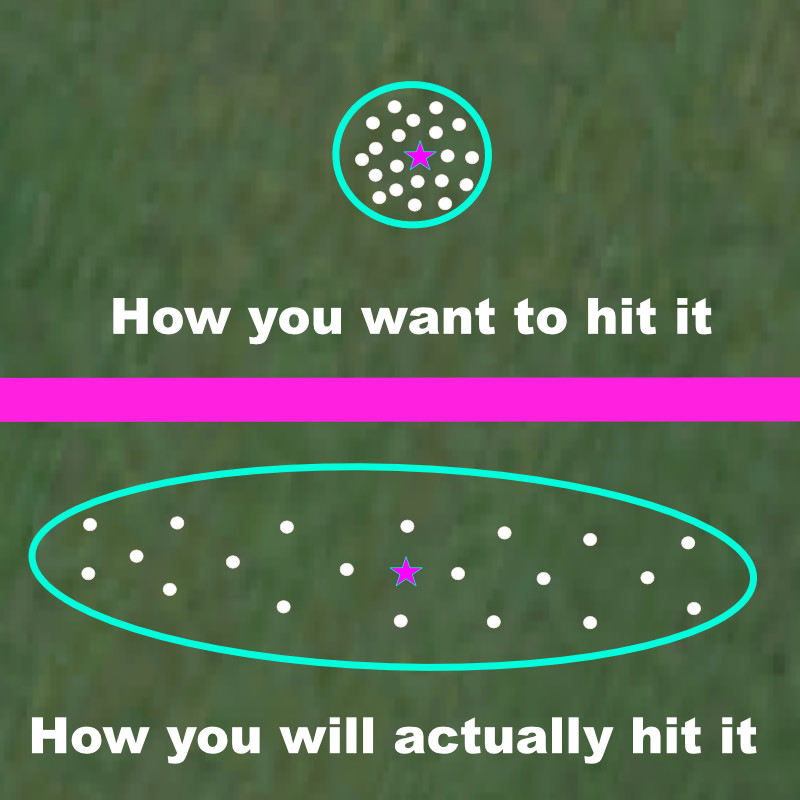
We all want to/believe we can hit every shot straight.
However, no matter how good our technique, no matter how much we practice and no matter how skilled we are, we will ALWAYS get some variability in our clubface and swing path alignments at impact.
This will result in a certain shot-spread from side to side. The below images depict a birds-eye view of our shot patterns (20 shots) relative to our intended target (pink star). Each white dot represents a single shot (or 1/20th of your shot dispersion).
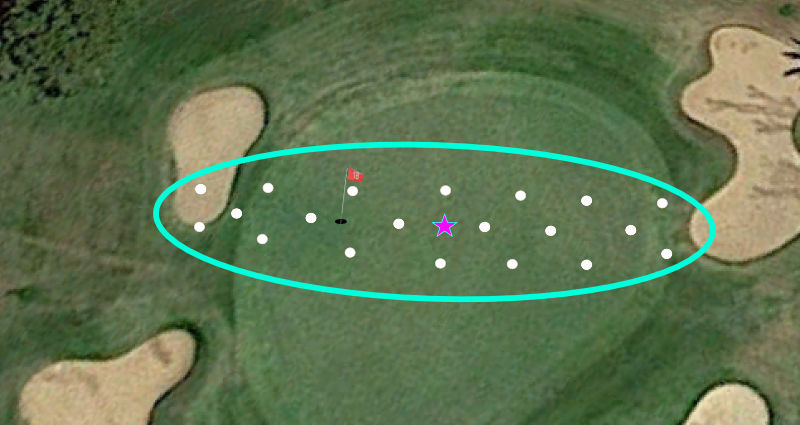 Without going into too much of the math behind the strategy (I will do in later articles), a player who targets the middle of the green in the below scenario will allow 17 out of 20 of their shots to land on the green/fringe. In the picture, the player has targeted (pink star) the middle of the green and ignored the flag.
Without going into too much of the math behind the strategy (I will do in later articles), a player who targets the middle of the green in the below scenario will allow 17 out of 20 of their shots to land on the green/fringe. In the picture, the player has targeted (pink star) the middle of the green and ignored the flag.
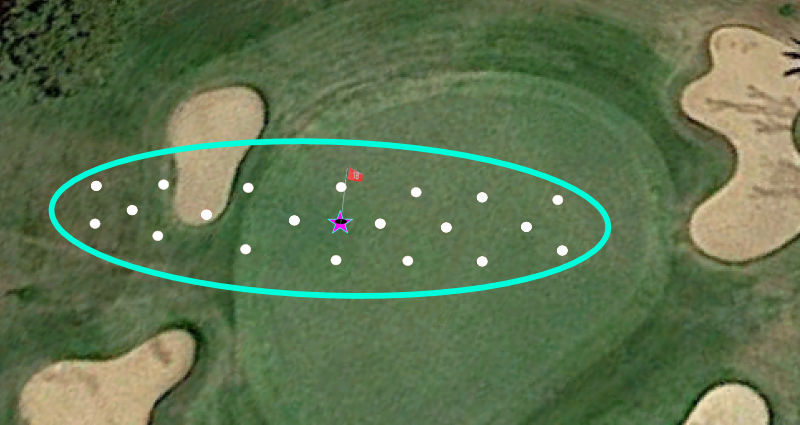 On the other hand, a player who targets the flag will get some shots on the green, but 7/20 of their shots will miss the green left (in picture, the player has targeted the flag).
On the other hand, a player who targets the flag will get some shots on the green, but 7/20 of their shots will miss the green left (in picture, the player has targeted the flag).
Here’s the kicker – not only does the player who targets the middle of the green hit more greens (and thus makes less bogeys), but they make the same amount of birdies. See below, where the green shots are birdie opportunities.
 By targeting the middle of the green, we will still miss greens in regulation (this is inevitable, even at the pro level). However, we not only hit more of them (20% more in this scenario), but we have the same number of birdie opportunities as when we target the flag.
By targeting the middle of the green, we will still miss greens in regulation (this is inevitable, even at the pro level). However, we not only hit more of them (20% more in this scenario), but we have the same number of birdie opportunities as when we target the flag.
Front To Back
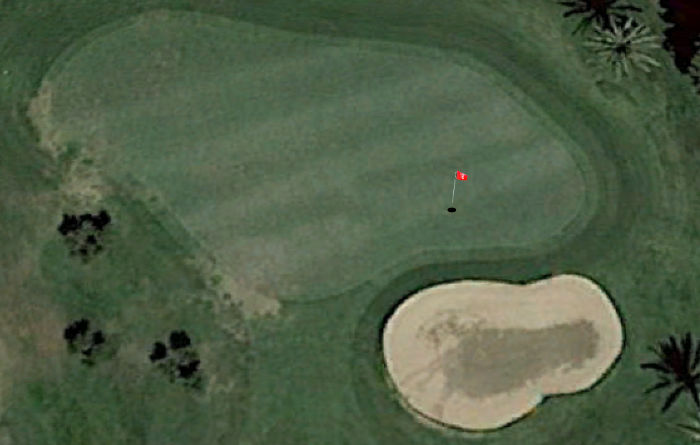 The same strategy works in terms of front to back (distance) dispersion.
The same strategy works in terms of front to back (distance) dispersion.
No one on the planet flushes every shot – certainly not YOU.
But what do you do when you are faced with this scenario?
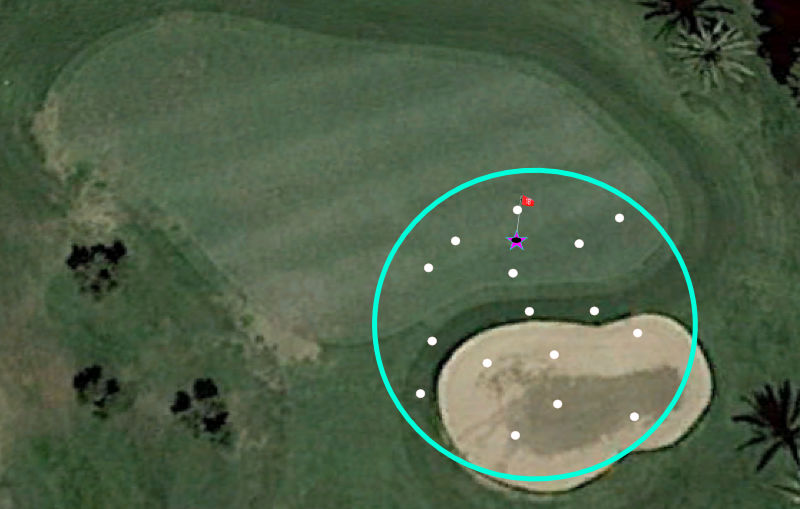 YOU pull out your club that you will get to the pin with a flushed shot. But what about those average shots? You know, the ones you fat by an inch or so, or hit a groove low on the face and drop 10-15 yards?
YOU pull out your club that you will get to the pin with a flushed shot. But what about those average shots? You know, the ones you fat by an inch or so, or hit a groove low on the face and drop 10-15 yards?
Look how many shots land short and roll back into the bunker. In fact, only 6/20 shots will successfully land on the green.
Well, what if you were to buffer for this by playing 10-15 yards past the cup (or more)? Now those bogeys become birdies, and the old birdies become pars.
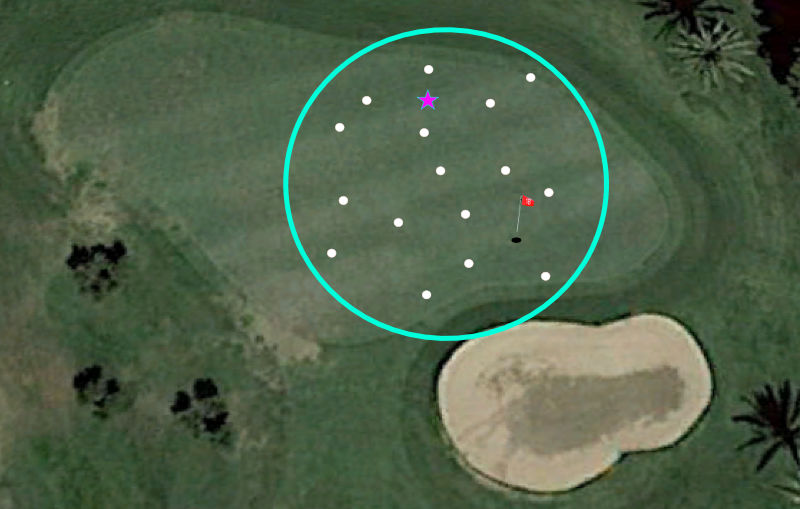 In the picture, we have managed to take the same shot pattern and create 100% green hits simply by playing towards the back (and more center) of the green.
In the picture, we have managed to take the same shot pattern and create 100% green hits simply by playing towards the back (and more center) of the green.
Less bogeys (or doubles if you are poor out of bunkers) AND the same amount of birdie opportunities – if not more due to more shots hitting the green.
Pros versus Amateurs
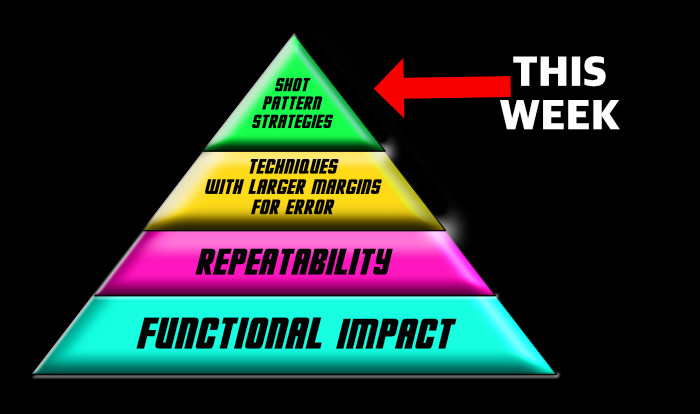 So, here is our new model with “strategy” added.
So, here is our new model with “strategy” added.
Because professionals have more of the model in place, I.E. they
- Produce highly functional clubhead/impacts
- Do so repeatably
- Use techniques which offer larger margins for error
they create tighter dispersions.
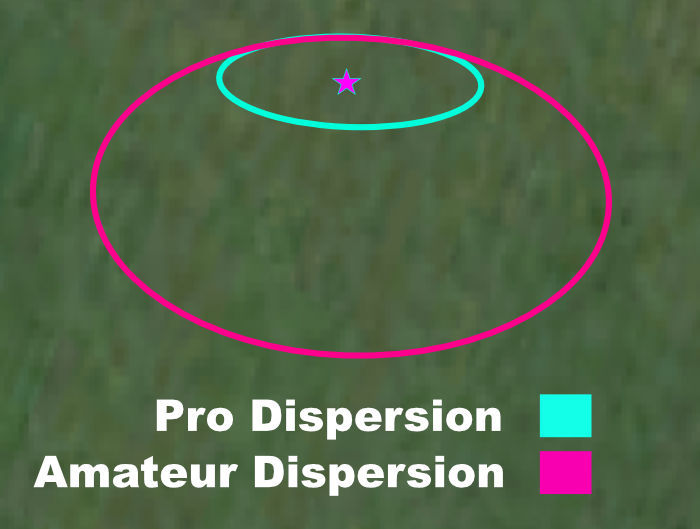 However, this doesn’t mean they don’t (consciously or not) give themselves a buffer both laterally and longitudinally. Firing at the flag as if they are a laser is usually a bad strategy on most holes – especially when the pin is tucked.
However, this doesn’t mean they don’t (consciously or not) give themselves a buffer both laterally and longitudinally. Firing at the flag as if they are a laser is usually a bad strategy on most holes – especially when the pin is tucked.
Amateurs tend to have bigger shot dispersions because of poor skill levels, as well as poor techniques.
Bigger shot patterns are certainly hard to strategize for, but amateurs can knock an incredible amount of shots off their game by doing so.

